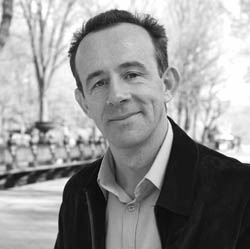
Do you tend to favor the straight-wire approach in a mic pre, or do you look for one that imparts a little character or color to the signal?
It depends upon the project. For home recordings, a mic pre that has less coloration is probably the one that I would advise using, if you’re trying to accurately represent what you’re hearing.
But if you’re trying to take a sound and morph it into something else, then the chain of processing doesn’t really matter because you’re going to seriously alter the sound anyway.
If you want to get an accurate representation, then you need to spend the time listening to the musician and moving the microphone around.
What if the microphone itself isn’t that great—perhaps because you’ve spent most of your budget on the mic preamp?
Wouldn’t you then want to use a preamp that enhances the sound of that not-so-great mic, as opposed to one that delivers the sound in an uncolored way?
No, I still think the straight-wire approach is the way to go. That brings to mind a project I did with producer Pat Leonard in Los Angeles; the artist was a classically trained pianist. We had a nine-foot Bosendorfer [piano] and a seven-foot Yamaha with the MIDI module.
We miked the Bosendorfer with a pair of B&Ks, but the Yamaha was miked up with a pair of [Shure SM] 57s, running through a pair of Neve mic pres. We were looking for the distinction between a very elegant piano sound and one that would really suit a pop recording, with a lot of elements surrounding the piano, so we didn’t want it to be all that broad-sounding.
So I do think the mic pre is the critical element, along with the placement of the mics and the touch of the player, and of course the quality of the instrument itself. It’s a combination of events that really articulate the sound.
Was the Yamaha piano miked in a standard stereo configuration?
Yes, just standard stereo, one 57 picking up the treble strings and the other picking up the bass strings, about a foot and a half apart.
No real trickery involved; again, I took the time to listen to what it sounded like in the room. Interestingly, on Elvis Costello’s North, I used an [AKG] C24 on the piano, just right down the middle of the soundboard, but I spotted a couple of [Neumann] KM 86s on the outside to see if I could add a little width to it.
On some songs they really helped, and on some songs they didn’t. So you pick and choose, depending on what kind of sonic landscape you’re trying to create.
You cut your teeth recording a lot of jingles. A lot of recording engineers say that they found the experience of doing jingles invaluable because it taught them to work quickly.
In a two- or three-hour jingle session, you may cut three or four different spots; plus you overdub them with voiceovers and additional information, mix down, edit, and copy, and they’re out the door with a whole neat package.
In comparison, making a record seems like a long drawn-out process that takes weeks or months, but as an engineer you still need to be able to work fast when the artist is ready to record. If you broke down how much time during those weeks the creative juices are actually flowing in terms of performances, it’s really a very small amount of time.
But you’re waiting for time to happen, and you’re trying to do everything you can to manipulate the environment so that when the artist feels they are ready, they can just fold into it and you’re recording. All the rest is just setting up for that moment.
It’s probably easier with home recording, because you’re in a very comfortable environment. Even for a lot of seasoned musicians, just the notion that they’re in a studio environment gives them red-light fever: “Okay, we’re putting it under the microscope.” Musicians often comment, “It was much easier in rehearsal,” and they’re right, it is easier because you’re not thinking about it.
I was just reading the other day about [famed jazz producer] Rudy Van Gelder’s first studio in Hackensack New Jersey, which was in his father’s house—the original home studio.
He’s quoted as saying that the reason a lot of the seminal Blue Note recordings were so great was because people just felt so comfortable in that studio—he even had home furniture there. The musicians would think, “We’re not recording,” but here were all of these classic recordings being created.
